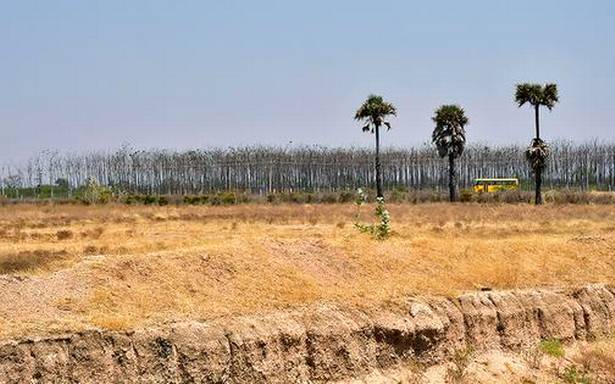It will impact farm productivity and cause submergence of islands, say scientists
Districts across Karnataka will see rise in summer temperature in the range of 0.5°C to 1.5°C in the coming years and will impact farm productivity, livestock, and cause submergence of islands, according to climate change experts.
In the next one decade or so, the warming of summer temperature will be in the range of 0.5°C to 1.0°C, largely in the Western Ghat districts. Warming will be in the range of 1.0°C to 1.5°C in the northern districts of Bidar, Kalaburagi, Yadgir, Bagalkot, Koppal, and some of central and eastern districts such as Chitradurga, Tumakuru, and Davangere, according to N.H. Ravindranath and G. Bala, authors of multiple UN IPCC (intergovernmental panel on climate change) and professors of IISc., Bengaluru.
In the long term, beyond the 2050s, they said the summer maximum temperature will be in the range of 1.0°C to 2.5°C in Karnataka. Warming will be between 1.0°C and 1.5°C in Udupi, Uttara Kannada, Dakshina Kannada, Kodagu, and Shivamogga and in the range of 1.5°C to 2°C in Tumakuru, Mandya, Chitradurga, Davangere, Ballari, Gadag, and Koppal.
Warming will be in the range of 2°C to 2.5°C for the northern districts of Bidar, Kalaburagi, Yadgir, Vijayapura, Bagalkot, and Raichur, according to Prof. Ravindranath, who was involved in preparation of climate change reports of Karnataka.
During the short term, winter minimum temperature will be in the range of 0.5°C to 1.0°C for the southern and central districts and in the range of 1°C to to 1.5°C for the northern districts of Karnataka.
Rise in temperature, Prof. Ravindranath said, would cause crop loss due to temperature and precipitation, and non-climatic factors such as changes in the soil moisture. For livestock, the impacts of climate change are primarily attributed to heat stress and this would cause reduction in fodder resources, water availability as well as sudden disease outbreaks. “About 10% to 25% reduction in milk production will be noticed owing to climate change,” he said.
Beside reduction in marine fish production, scientists said rise in sea level would lead to submergence of many foreshore facilities such as jetties, wharfs, harbours, and other fish landing facilities, islands along the coastline. The State has 94 islands and of these, 23 islands are inhabited mostly by fishing communities and farmers.
Experts underlined the need for immediate requirement to assess the vulnerability of these infrastructure and make necessary constructions at the earliest to provide sufficient number of foreshore facilities for the community.
Source: Read Full Article

